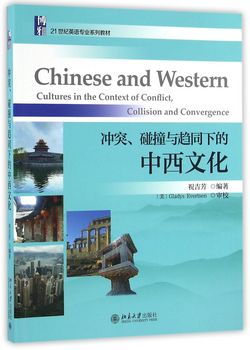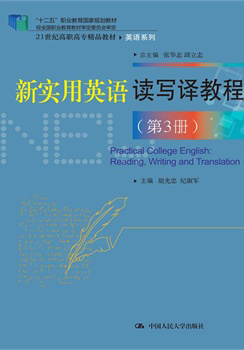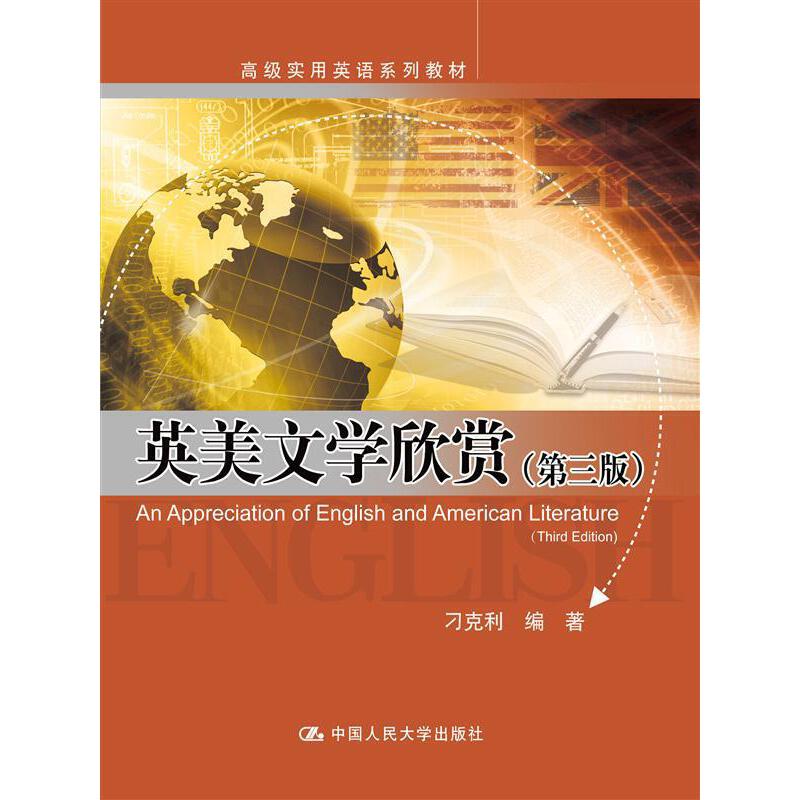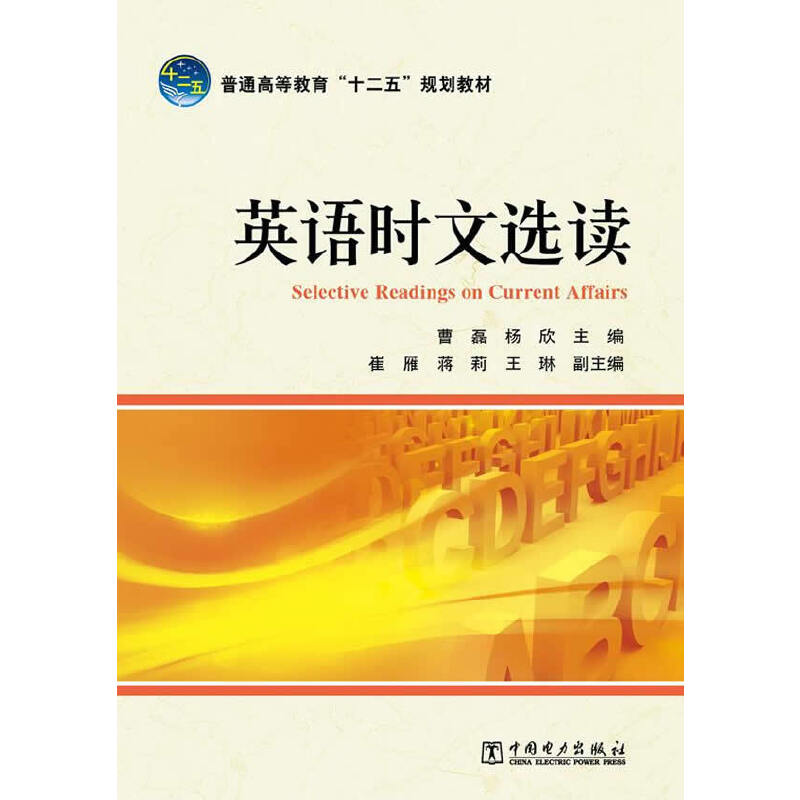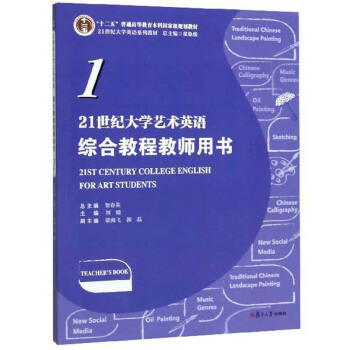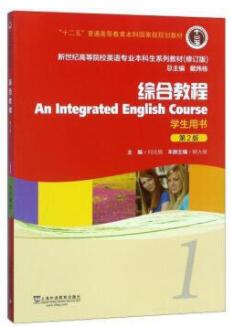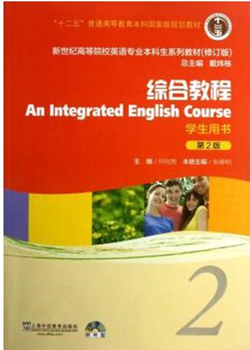冲突、碰撞与趋同下的中西文化 / 21世纪英语专业系列教材
定价:¥45.00
作者: 祝吉芳
出版时间:2016-07
出版社:北京大学出版社
- 北京大学出版社
- 9787301272718
- 1版
- 98533
- 43171080-5
- 平装
- 16开
- 2016-07
- 256
- 324
- G04
- 英语
作者简介
内容简介
在客观再现中西方学者有关中西方文化差异研究成果的基础上,本教材具体内容以近年来的大量跨文化交流案例为横线,以下述五个部分的内容为纵线,全面而审慎地展开:中西文化对比的意义;
无声语言与文化差异;思维与文化差异;价值观与文化差异;文化本位差异。
视野较宽:21世纪的英语教学不应仅局限于语言层面,应该把视野扩大到文化层面,因此本教材还强调文化差异意识及敏感性的培养。
涉及面广:本教材综合了英汉语言学、翻译学、文化学、文化交流学、人类学、史学等学科知识,比同类教材更重视学生对所学知识的综合运用。
时代感强:今
无声语言与文化差异;思维与文化差异;价值观与文化差异;文化本位差异。
视野较宽:21世纪的英语教学不应仅局限于语言层面,应该把视野扩大到文化层面,因此本教材还强调文化差异意识及敏感性的培养。
涉及面广:本教材综合了英汉语言学、翻译学、文化学、文化交流学、人类学、史学等学科知识,比同类教材更重视学生对所学知识的综合运用。
时代感强:今
目录
Foreword
Part Ⅰ East and West
Unit 1 Why Contrasting Chinese and Western Cultures?
Ⅰ Ancient Civilizations and Cultures
Ⅱ Cross-cultural Comparative Studies in China
Ⅲ Ⅰmperatives for Contrasting Chinese and Western Cultures
Ⅳ Key Concepts
Unit 2 Traditional Characteristics of Chinese and Western Cultures
Ⅰ "There Are All Kinds of Birds When a Forest Gets Large
Ⅱ Traditional Chinese Cultural Characteristics
Ⅲ Traditional Western Cultural Characteristics
Unit 3 Affinities Across Cultures
Ⅰ An Unexpected Affinity
Ⅱ Reading for More Cultural Affinities
Ⅲ Key Concepts
Part Ⅱ Cultural Differences in Silent Languages
Unit 4 Time
Ⅰ Time in China and the West
Ⅱ Two Time Modes
Ⅲ Past-oriented Societies vs. Future-oriented Societies
Ⅳ Two Time Orientations
Unit 5 Space
Ⅰ Spatial Language
Ⅱ Spatial Language and Culotte
Ⅲ Spatial Language and Life
Ⅳ Changes We Cannot Afford
Unit 6 Smiles, Nods and Silence
Ⅰ Smiles
Ⅱ Nods
Ⅲ Silence
Part Ⅲ Cultural Differences in Thinking
Unit 7 Intuitive vs. Logical Thinking
Ⅰ Definitions of Intuitive and Logical Thinking
Ⅱ Philosophy and Thinking
Ⅲ Application of Two Thinking Modes
Ⅳ Impact of Thinking Modes on Writings
Ⅴ Logic in China and Intuition in the West
Unit 8 Dialectical vs. Analytical Reasoning
Ⅰ Proverb Preferences Across Cultures
Ⅱ Dialectical Reasoning
Ⅲ Analytical Reasoning
Ⅳ More About Two Reasoning Modes
Unit 9 Holistie vs. Atomistic Visions
Ⅰ A Detention Room Ⅰncident
Ⅱ Prominent Attributes of Holistic and Atomistic Visions
Ⅲ Vision and Cognition
Ⅳ Vision and Language
Ⅴ Zhengshan Xiaozhong and Lipton Black Tea
Unit 10 Categorizing Objects by Relationships vs. by Attributes
Ⅰ Two Ways to Categorize One Person
Ⅱ Principles to Categorize Objects
Ⅲ How to Categorize Objects and Why
Ⅳ Impacts of Different Ways of Categorization
Ⅴ Causal Attribution Differences Arising out of Different Categorization Ways
Unit 11 Non-controllers vs. Controllers
Ⅰ Too Early to Tell
Ⅱ Why So Different Stances Towards Life?
Ⅲ "Being" and "Doing" Cultures
ⅣManifestations of "Being" Culture and "Doing" Culture
Part Ⅳ Different Cultural Orientations
Unit 12 The Introvert-oriented vs. the Extrovert-oriented
Ⅰ Personality Types
Ⅱ Personality Types of Cultures
Ⅲ Effects of Personality Types on Pattern Preferences
Ⅳ A Contrast of Cultural Phenomena
Ⅴ The Trend of the Introvert-oriented Culture
Unit 13 Collectivism vs. Individualism
Ⅰ An Embarrassing Habit
Ⅱ Collectivism and Individualism as Cultural Orientations
Ⅲ Collectivism and Individualism in Cultural Anthropology
Ⅳ Collectivist and Individualist Perspectives of "Self"
Ⅴ Interdependence vs. Independence
Unit 14 Femininity vs. Masculinity
Ⅰ Gender Traits
Ⅱ Feminine Chinese Culture
Ⅲ Masculine Western Culture
Ⅳ Why So Different?
Ⅴ The Trend of Cultures and Its Potential Impact
Unit 15 Advocacy of Jing vs. Dong
Ⅰ Introduction to Two Concepts
Ⅱ Jing Advocacy of China
Ⅲ Dong Advocacy of the West
Ⅳ Differences and Discomforts
Unit 16 Ⅰmplicitness vs. Explicitness
Ⅰ "Half a Story"
Ⅱ Implicitness and Explicitness of Language
Ⅲ Implicit Chinese
Ⅳ Explicit Westerners
Ⅴ High Context vs. Low Context
Ⅵ "Chicken and Duck Talk"
Part V Different Cultural Standards
Unit 17 Peace vs. Conflict
Ⅰ Great Names and Different Cultural Standards
Ⅱ External Factors and Cultural Standards
Ⅲ Cultural Standards and Their Unique Products
Ⅳ Better Ways to Know Each Other
Unit 18 Egalitarian and Inegalitarian Distribution
Ⅰ Hate-the-rich Mentality
Ⅱ Chinese-style Egalitarianism
Ⅲ Western-style Inegalitarianism
Ⅳ Egalitarianism and Inegalitarianism in China and the West
Unit 19 Good vs. Evil Human Nature
Ⅰ Key Concepts
Ⅱ Human Nature and Education
Ⅲ Theorization of Assumptions About Human Nature
Ⅳ Human Nature Theories and the Rule of
Part Ⅰ East and West
Unit 1 Why Contrasting Chinese and Western Cultures?
Ⅰ Ancient Civilizations and Cultures
Ⅱ Cross-cultural Comparative Studies in China
Ⅲ Ⅰmperatives for Contrasting Chinese and Western Cultures
Ⅳ Key Concepts
Unit 2 Traditional Characteristics of Chinese and Western Cultures
Ⅰ "There Are All Kinds of Birds When a Forest Gets Large
Ⅱ Traditional Chinese Cultural Characteristics
Ⅲ Traditional Western Cultural Characteristics
Unit 3 Affinities Across Cultures
Ⅰ An Unexpected Affinity
Ⅱ Reading for More Cultural Affinities
Ⅲ Key Concepts
Part Ⅱ Cultural Differences in Silent Languages
Unit 4 Time
Ⅰ Time in China and the West
Ⅱ Two Time Modes
Ⅲ Past-oriented Societies vs. Future-oriented Societies
Ⅳ Two Time Orientations
Unit 5 Space
Ⅰ Spatial Language
Ⅱ Spatial Language and Culotte
Ⅲ Spatial Language and Life
Ⅳ Changes We Cannot Afford
Unit 6 Smiles, Nods and Silence
Ⅰ Smiles
Ⅱ Nods
Ⅲ Silence
Part Ⅲ Cultural Differences in Thinking
Unit 7 Intuitive vs. Logical Thinking
Ⅰ Definitions of Intuitive and Logical Thinking
Ⅱ Philosophy and Thinking
Ⅲ Application of Two Thinking Modes
Ⅳ Impact of Thinking Modes on Writings
Ⅴ Logic in China and Intuition in the West
Unit 8 Dialectical vs. Analytical Reasoning
Ⅰ Proverb Preferences Across Cultures
Ⅱ Dialectical Reasoning
Ⅲ Analytical Reasoning
Ⅳ More About Two Reasoning Modes
Unit 9 Holistie vs. Atomistic Visions
Ⅰ A Detention Room Ⅰncident
Ⅱ Prominent Attributes of Holistic and Atomistic Visions
Ⅲ Vision and Cognition
Ⅳ Vision and Language
Ⅴ Zhengshan Xiaozhong and Lipton Black Tea
Unit 10 Categorizing Objects by Relationships vs. by Attributes
Ⅰ Two Ways to Categorize One Person
Ⅱ Principles to Categorize Objects
Ⅲ How to Categorize Objects and Why
Ⅳ Impacts of Different Ways of Categorization
Ⅴ Causal Attribution Differences Arising out of Different Categorization Ways
Unit 11 Non-controllers vs. Controllers
Ⅰ Too Early to Tell
Ⅱ Why So Different Stances Towards Life?
Ⅲ "Being" and "Doing" Cultures
ⅣManifestations of "Being" Culture and "Doing" Culture
Part Ⅳ Different Cultural Orientations
Unit 12 The Introvert-oriented vs. the Extrovert-oriented
Ⅰ Personality Types
Ⅱ Personality Types of Cultures
Ⅲ Effects of Personality Types on Pattern Preferences
Ⅳ A Contrast of Cultural Phenomena
Ⅴ The Trend of the Introvert-oriented Culture
Unit 13 Collectivism vs. Individualism
Ⅰ An Embarrassing Habit
Ⅱ Collectivism and Individualism as Cultural Orientations
Ⅲ Collectivism and Individualism in Cultural Anthropology
Ⅳ Collectivist and Individualist Perspectives of "Self"
Ⅴ Interdependence vs. Independence
Unit 14 Femininity vs. Masculinity
Ⅰ Gender Traits
Ⅱ Feminine Chinese Culture
Ⅲ Masculine Western Culture
Ⅳ Why So Different?
Ⅴ The Trend of Cultures and Its Potential Impact
Unit 15 Advocacy of Jing vs. Dong
Ⅰ Introduction to Two Concepts
Ⅱ Jing Advocacy of China
Ⅲ Dong Advocacy of the West
Ⅳ Differences and Discomforts
Unit 16 Ⅰmplicitness vs. Explicitness
Ⅰ "Half a Story"
Ⅱ Implicitness and Explicitness of Language
Ⅲ Implicit Chinese
Ⅳ Explicit Westerners
Ⅴ High Context vs. Low Context
Ⅵ "Chicken and Duck Talk"
Part V Different Cultural Standards
Unit 17 Peace vs. Conflict
Ⅰ Great Names and Different Cultural Standards
Ⅱ External Factors and Cultural Standards
Ⅲ Cultural Standards and Their Unique Products
Ⅳ Better Ways to Know Each Other
Unit 18 Egalitarian and Inegalitarian Distribution
Ⅰ Hate-the-rich Mentality
Ⅱ Chinese-style Egalitarianism
Ⅲ Western-style Inegalitarianism
Ⅳ Egalitarianism and Inegalitarianism in China and the West
Unit 19 Good vs. Evil Human Nature
Ⅰ Key Concepts
Ⅱ Human Nature and Education
Ⅲ Theorization of Assumptions About Human Nature
Ⅳ Human Nature Theories and the Rule of

